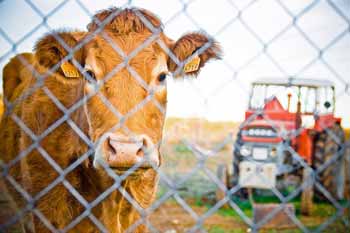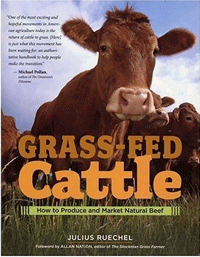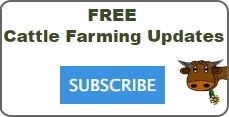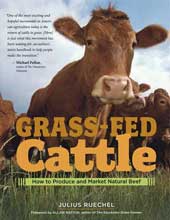Low-Cost Cow-Calf Ranching Strategies
In this four-part article about low-cost cow calf ranching strategies I've covered a wide range of techniques to reduce beef production costs.
Part one covered calving. Part two explored genetics, selection, culling, and breeding practices. Part three explored how to increase cattle weight gains, reduce feed costs, and make your pastures work harder.
In this fourth and final part of the article I will explore the two most powerful tools in your ranching tool box - your cattle and your electric fences - and their role in minimizing disease pressures, reducing off-farm inputs like fertilizer and herbicides, reducing labor costs, and increasing pasture yields. Your grazing cattle herd can have such a powerful impact on the land that, when harnessed correctly, it creates a true self-improving farm ecosystem!
Cow-Calf Ranching Tools

Image Credit: Camilo Rueda López, Flicker, CC BY-ND-2.0

Image Credit: Camilo Rueda López, Flicker, CC BY-ND-2.0
What are the two most powerful tools in the low-cost cow-calf cattle rancher's toolbox?
It's not the tractor. Nor the plow.
It's your electric fence grid and your cattle herd!
By learning how to use your electric fences and your pasture rotation to shape the behavior of your cattle herd during grazing you gain the power to increase pasture yields, improve pasture soils, increase soil moisture retention, and reduce pasture weeds using just the impact that your cattle have on the land.
While there are other tools besides fences and cattle that also play important roles in achieving these pasture goals, the best way to reduce your production costs is perfect your grazing rotation and electric fence layout before reaching for more expensive tools. Becoming an expert in electric fencing and grazing management will go a very long way towards minimizing how much fertilizer, irrigation, reseeding, and weed control you will need.
And the cool thing about harnessing the power of a grazing herd is that cattle will cheerfully do all that work for you for free. Not consciously, of course. They have no idea how their behavior will shape the land. But with a little careful planning on your part to create an ideal pasture rotation, you can harness their herd migration through your pastures to make dramatic differences to your pastures, soils, and even to the health and weight gains of your cattle, all provided free of charge by your herd's greedy mouths and trampling feet.
How do you create an ideal pasture rotation?
A smart electric fence grid provides near infinite control over your cattle's grazing impact. It's the tool that allows you to shape your cattle's grazing behavior into a perfect herd migration through your pastures. And, rather conveniently, it is also the easiest, cheapest, and least capital-intensive fence infrastructure you can use on your farm. It does so much more than any other fence you can build, but cost so much less to build. Win-win.
You can probably see where all this is going. Less money tied up in fences, longer grazing seasons, and a simpler pasture rotation that requires less labor all translates into lower operating costs and lower capital investment. With less capital tied up in fences and machinery, that means more money left over to expand your herd and your land base (or pay down debt).
Pasture productivity isn't the only beneficiary of a well-designed pasture rotation.
Even modest changes to your grazing management will increase weight gains by triggering competitiveness in the grazing herd. And many disease pressures can be eliminated before they even start simply through how you manage your pasture rotation, thus eliminating expensive pesticides and antibiotics. The many subtle ways that you can use your pasture rotation to improve herd health and increase weight gains are covered in my beef cattle management article.
By learning how to put your cattle to work they become the most powerful tool in your toolbox to boost pastures productivity, increase daily weight gains, and improve herd health without costing you a single dollar of extra time or extra farm inputs!
A Self-Improving Cattle Farming Strategy
As you can see over the course of this article series, there is no single secret to low-cost beef cattle production. Just many little tweaks guided by a carefully-constructed farm management plan.
The theme that unites all these low-cost cow-calf production strategies is that they are essentially all free tools - cattle behavior during grazing, picking the perfect calving date, matching your cattle breed to your environment, improving fertility by understanding the nutritional needs during key adolescent development stages, learning the skill of winter grazing, and so on.
All they require is planning.
But planning is cheap. And the potential payoff is huge. Lower production costs, less capital tied up in equipment, less farm inputs, healthier cattle.
Mastering these low-cost cow-calf production techniques will help you join that elite group of cattle producers who are consistently profitable regardless if cattle prices are high or low and regardless if the weather is favorable or lousy.
And the best part about all these strategies is that they create a self-improving farm ecosystem where the natural advantages built into the system will continue to multiply year after year.
Once set up they create a positive feedback loop that continues to reduce farm inputs, reduce labor, and reduce operating challenges year after year, even as they continue to improve your pasture and cattle productivity and continue to increase your overall farm profitability.
A 42-day breeding season will gradually weed out the least fertile, high maintenance cattle from your herd and improve conception rates year after year.
Summer calving allows you to safely extend your grazing season into the winter months on frozen pastures. And you can graze longer each year as your skills improve. Over time you'll depend less on an expensive fleet of equipment. Less equipment means less debt, and less time and money spent on maintenance and repair.
Getting a pasture rotation up and running will begin changing the soils. Grass loves periodic grazing and will gradually squeeze out the weeds and cover up the bare patches. And soil moisture retention will increase as the pasture rotation promotes the build up of organic matter in the soil, which means more drought resistance, more consistent pasture yields, and lower fertilizer costs.
I think you get my point. These low-cost cow calf ranching strategies not only reduce production costs over the short-term, but also trigger cumulative changes that continue to improve your land and your cattle herd over time. Unlike a fertilizer application that must be re-applied year after year, investing the initial time and effort to implement these low-cost strategies creates a self-supporting and self-maintaining system. The positive benefits come back year after year without new investment and continue to grow larger year after year because of the positive long-term impact that they have on the pastures, soils, and cattle.
(Disclosure: I get commissions for purchases made using Amazon links in my post.)
If you would like help putting together your own low-cost cow-calf production plan, the step-by-step chapter layout of my book Grass-Fed Cattle: How to Produce and Market Natural Beef#CommissionsEarned will guide you through the planning process.
Do you have any low-cost cow calf ranching tips?
What are your favorite strategies to reduce expenses, increase pasture productivity, and increase cattle weight gains?
Share them in the Comments section below!
And please pay it forward by using the social media buttons to let your friends know about the low-cost ranching strategies you've learned about here at this website.
|
Page 4 / 4 |




